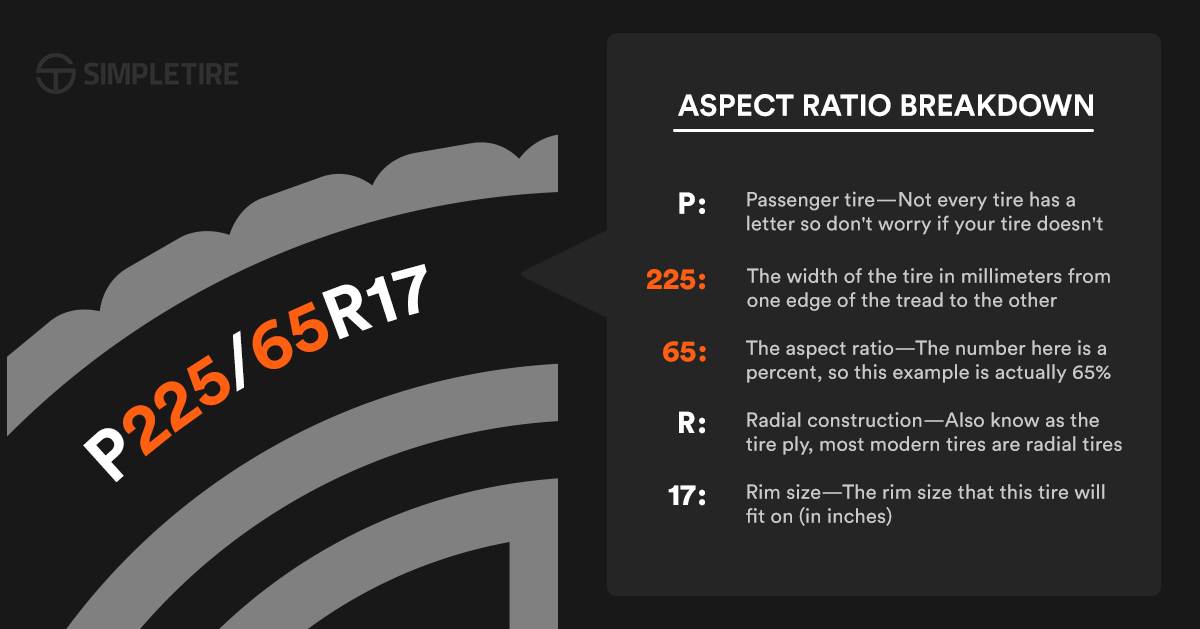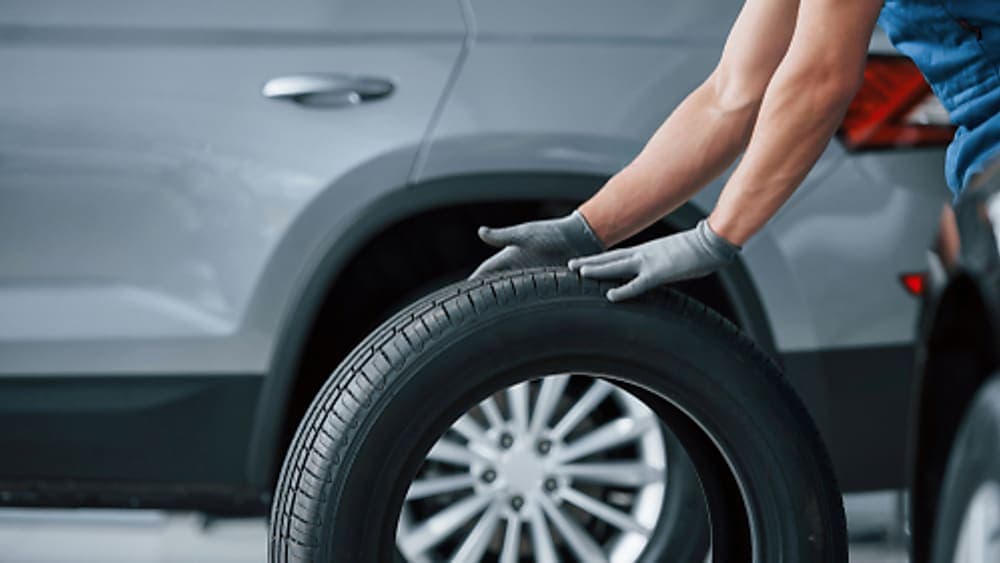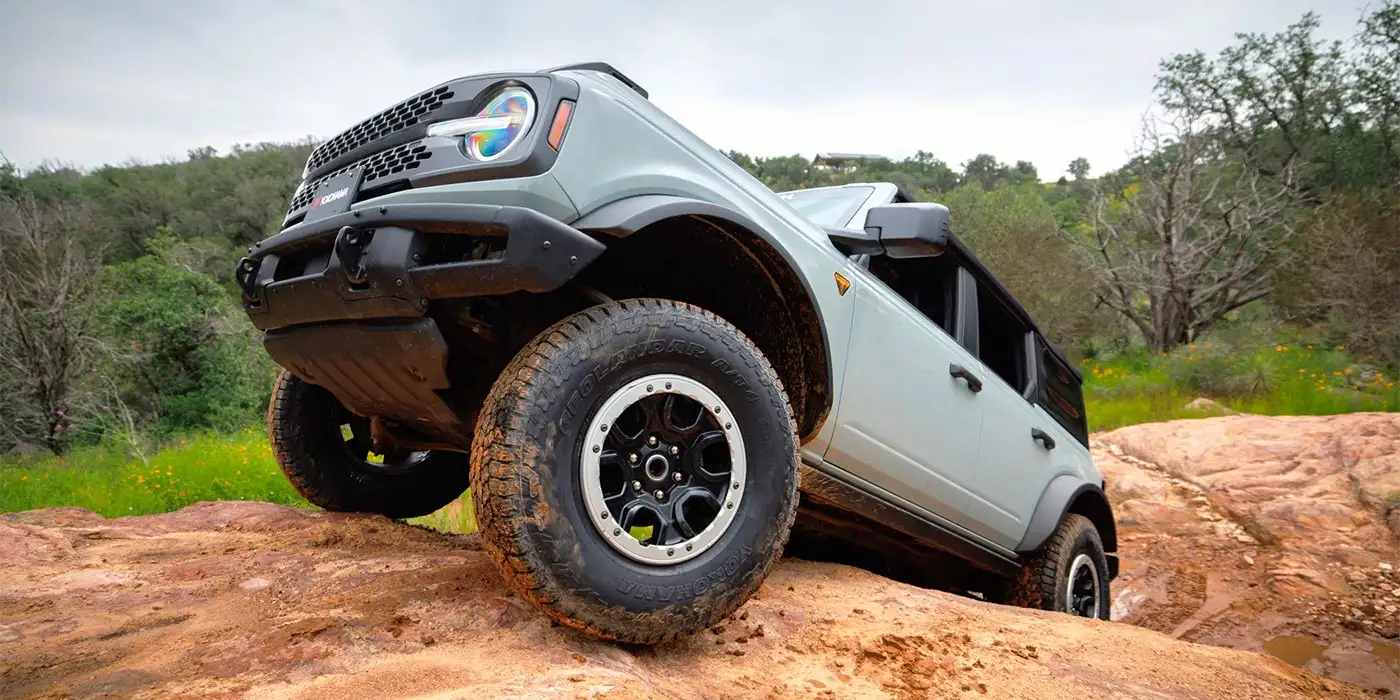Tire Buying Guides
Free shipping
Best price guarantee
Special pricing
Financing with Resolve
Easy returns
Your tires communicate important information through a series of numbers and letters molded into their sidewalls. Among these specifications, the aspect ratio stands out as a critical measurement that directly influences how your vehicle performs, handles, and feels on the road.
The aspect ratio represents one of three essential numbers in your tire size marking, yet many drivers overlook its significance when shopping for new tires. This seemingly simple percentage actually determines everything from your daily driving comfort to your vehicle's cornering capabilities and even its fuel efficiency.
Understanding tire aspect ratio empowers you to make informed decisions that match your driving needs and preferences. Whether you prioritize a smooth, cushioned ride for your daily commute or seek precise handling for spirited driving, the aspect ratio plays a pivotal role in delivering the performance characteristics you desire.
What Is Tire Aspect Ratio?

The Basic Definition
Tire aspect ratio is the height of your tire's sidewall expressed as a percentage of the tire's width. This measurement appears as the second number in your tire size marking—for instance, in a tire size of 225/65R17, the number 65 represents the aspect ratio. This tells you that the sidewall height equals 65% of the tire's 225-millimeter width.
The aspect ratio serves as a crucial indicator of your tire's profile: how tall or short the sidewall appears when you view the tire from the side. A higher number means a taller sidewall with more rubber between the wheel and the road surface, while a lower number indicates a shorter sidewall with less cushioning material. This single measurement profoundly impacts your vehicle's ride characteristics, handling dynamics, and overall performance.
How to Read Aspect Ratio on Your Tires
Locating your tire's aspect ratio requires nothing more than a quick glance at the sidewall of any tire on your vehicle. You'll find a series of numbers and letters molded into the rubber, typically formatted like 215/65R16. The aspect ratio always appears as the middle number in this sequence—in this example, it's 65.
This number tells you that the sidewall height measures 65% of the tire's 215-millimeter width. To visualize this relationship: if you could measure the tire's width at 215 millimeters (approximately 8.5 inches), the sidewall height would measure about 140 millimeters (5.5 inches) from the wheel rim to the tread surface.
Understanding this relationship helps explain why tires with the same width but different aspect ratios look dramatically different. A 225/45 tire appears much sportier with its low-profile stance compared to a 225/70 tire, which displays a notably taller sidewall despite sharing the same width measurement.
How Is Tire Aspect Ratio Calculated?
The Tire Aspect Ratio Formula
Determining the tire aspect ratio involves understanding the relationship between the sidewall height and the tire's width. By using the formula—sidewall height divided by tire width times 100—you can find the aspect ratio percentage. This metric reveals how much of the tire's width is represented by the sidewall height, providing insight into the tire's profile shape.
This calculation is essential for ensuring the tire fits correctly and supports the vehicle's performance and safety needs. It plays a vital role in choosing the right tire to match your driving style and vehicle requirements.
Converting Measurements for Accuracy
Tire sizes are given in millimeters, which can be converted to inches for better understanding. Divide the millimeter measurement by 25.4 to switch to inches, offering a clearer comparison when selecting tires.
Remember to include the total structure when determining the tire's height: this encompasses the two sidewalls and the wheel's diameter. Accurate measurements ensure compatibility with your vehicle and enhance driving comfort and performance.
Why Does Tire Aspect Ratio Matter for Your Vehicle?

Impact on Ride Comfort
Tire aspect ratio plays a crucial role in determining ride quality. Higher aspect ratios offer more sidewall flexibility, which helps cushion bumps and uneven surfaces, providing a gentler ride. Conversely, lower aspect ratios reduce cushioning but allow for increased sensitivity to road conditions.
Effects on Vehicle Handling
Handling characteristics are significantly impacted by tire aspect ratio. Tires with lower aspect ratios reduce sidewall movement, enhancing steering precision and stability during turns. This makes them ideal for drivers seeking enhanced control. In contrast, higher aspect ratios offer more pliability, which can be advantageous on bumpy roads.
Fuel Economy Considerations
Aspect ratio also influences fuel efficiency. Tires with a lower profile might increase rolling resistance, affecting fuel usage. In contrast, those with a higher aspect ratio can often optimize fuel economy, leading to slight improvements in mileage. Selecting the appropriate aspect ratio can help manage fuel costs efficiently.
Common Tire Aspect Ratio Comparisons
Tire Aspect Ratio 60 vs 65
Selecting between a 60 and 65 aspect ratio involves considering the balance of ride quality and road feedback. A 65 aspect ratio means more sidewall height, offering enhanced shock absorption and a smoother journey over bumpy roads. On the other hand, the 60 aspect ratio prioritizes a firmer ride, giving a slight edge in steering precision for those who enjoy a more dynamic driving experience.
Tire Aspect Ratio 45 vs 55
Choosing between a 45 and 55 aspect ratio focuses on the trade-offs between style and comfort. A 45 aspect ratio delivers a sleek, performance-oriented look with sharper handling, ideal for spirited driving. Meanwhile, a 55 aspect ratio increases the cushioning effect, making it suitable for daily driving by providing a softer ride and added protection against road imperfections.
Tire Aspect Ratio 65 vs 70
When considering a 65 versus a 70 aspect ratio, the focus shifts to comfort and versatility. A 70 aspect ratio maximizes comfort, perfect for long trips where road smoothness is key. The 65, however, offers a compromise, ensuring both comfort and adequate handling, making it a versatile choice for a wide range of driving situations, particularly for family vehicles.
Tire Aspect Ratio 60 vs 55
The subtle differences between a 60 and 55 aspect ratio relate to everyday driving nuances. A 60 aspect ratio provides a more cushioned feel, ideal for absorbing minor road bumps during commutes. In contrast, a 55 aspect ratio enhances steering feedback slightly, making it appealing for those who value a more connected feel to the road.
How Different Aspect Ratios Affect Performance
Low Profile Tires (Aspect Ratio 35-50)

Low profile tires deliver exceptional precision in steering and enhanced cornering ability. The shorter sidewalls contribute to a more direct connection with the road, ideal for performance-driven vehicles. However, they offer less protection against road imperfections, which can lead to potential damage and higher replacement costs.
Standard Profile Tires (Aspect Ratio 55-70)

Standard profile tires provide a great blend of comfort and control. They feature a moderate sidewall height, which ensures a smooth ride while still offering responsive handling. These tires are commonly found on everyday vehicles and are appreciated for their durability and cost-effectiveness when replacements are needed.
High Profile Tires (Aspect Ratio 70+)

High profile tires are designed for maximum cushioning, making them perfect for uneven and off-road terrains. The increased sidewall height absorbs shocks effectively, enhancing comfort. Though they may not be as agile during quick maneuvers, they are favored for their ability to tackle challenging surfaces, especially on trucks and SUVs.
How to Choose the Right Tire Aspect Ratio
Consider Your Driving Style
Your driving habits greatly influence your tire choice. For those who prioritize a smoother ride during long commutes, selecting a tire with a taller sidewall can offer enhanced comfort. Enthusiasts who enjoy responsive handling will benefit from a tire with a shorter sidewall, providing sharper control on winding roads. A balanced aspect ratio caters to drivers who experience a mix of city and highway driving, offering both comfort and agility.
Check Your Vehicle's Requirements
Ensuring that your tires match your vehicle's specifications is essential for maintaining performance and safety. Consult the vehicle manual for guidance on suitable tire sizes and aspect ratios. The information sticker found on the driver's door jamb also provides accurate fitment details. Sticking to these guidelines helps preserve the vehicle’s handling and fuel efficiency.
Factor in Local Road Conditions
The type of roads you frequently travel on should guide your choice of tire aspect ratio. A taller sidewall proves beneficial on uneven or potholed roads, absorbing impacts and enhancing ride quality. In contrast, smooth and well-maintained highways can accommodate tires with lower profiles, which offer increased stability. Additionally, consider weather patterns in your region, as some aspect ratios perform better under specific conditions, such as rain or snow.
What Happens When You Change Tire Aspect Ratio?
Effects on Speedometer Accuracy
Altering the tire's aspect ratio changes the circumference, which can affect how the speedometer functions. A larger circumference means the vehicle travels farther per wheel rotation, potentially leading to inaccurate speed readings. To maintain precision, using a tire aspect ratio calculator helps ensure the new size matches your vehicle's specifications.
Impact on Vehicle Systems
Adjusting the aspect ratio can interfere with the calibration of key systems. The anti-lock braking system (ABS) depends on exact wheel speed data, which can be thrown off by size discrepancies. Traction control systems also rely on correct tire dimensions for optimal operation, and significant changes might activate warning indicators.
Clearance Considerations
Modifying the aspect ratio impacts the fit within the wheel well. Lower ratios mean less space between the tire and body, potentially leading to clearance issues when steering or over bumps. Conversely, higher ratios might result in contact with the wheel well, especially in tight spaces. Confirming adequate clearance before adjustments is essential to prevent any interference.
Understanding tire aspect ratio empowers you to make the right choice for your driving needs, whether you prioritize comfort, performance, or a balance of both. By considering your driving style, vehicle requirements, and local road conditions, you can select the perfect tire profile that enhances your daily driving experience. When you're ready to put this knowledge into action, we invite you to shop for tires online and find the best deals where our extensive selection ensures you'll find the ideal match for your vehicle.
Ready to find the perfect tires?
Search By